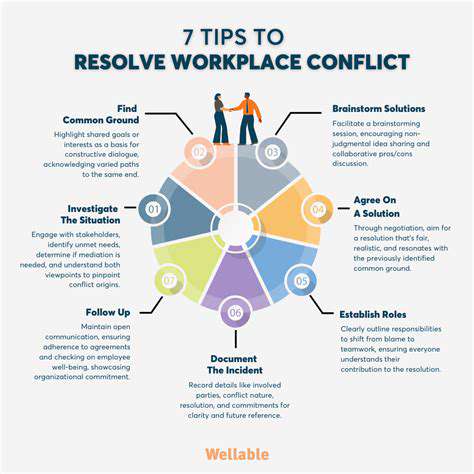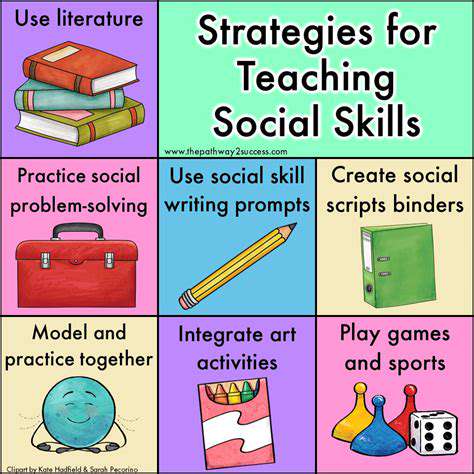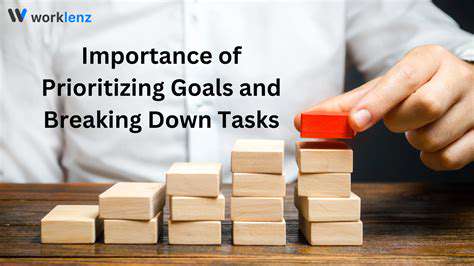Teaching Emotional Literacy: Helping Kids Understand Their Feelings
Recognizing and Naming the Spectrum of Feelings
Understanding the Basics of Feelings
Emotional literacy is the ability to identify, understand, and manage one's own emotions and the emotions of others. It's a crucial skill for navigating social situations and building healthy relationships. A fundamental aspect of emotional literacy is recognizing the vast spectrum of human feelings, from the simple joy of a sunny day to the complex grief of loss. This recognition is the first step toward healthy emotional expression and regulation.
Different feelings can manifest in various ways, influencing our thoughts and actions. Understanding these basic emotional responses helps us to better interpret our own experiences and those of others, paving the way for more effective communication and empathy.
Identifying Primary Emotions
Primary emotions, often considered fundamental to the human experience, include happiness, sadness, anger, fear, and surprise. Each of these emotions plays a vital role in our survival and well-being, signaling important information about our environment and internal state. Recognizing these core feelings is crucial for developing emotional intelligence and building resilience.
Recognizing Secondary Emotions
Secondary emotions are more complex and often emerge as a response to primary emotions. For example, frustration might arise from unmet expectations, while jealousy stems from perceived threats to our relationships. Understanding how these feelings develop and interact with primary emotions is essential for nuanced emotional understanding.
Learning to differentiate between primary and secondary emotions allows us to better navigate the complexities of our internal world and respond more effectively to external stimuli.
The Role of Body Language in Emotional Expression
Our bodies often communicate emotions nonverbally. Facial expressions, posture, and tone of voice can all convey feelings, even when words are silent. Recognizing these subtle cues is an important part of emotional literacy, enabling us to better understand the emotional states of others and respond with greater empathy.
Developing Emotional Vocabulary
Having a rich emotional vocabulary allows us to express ourselves more precisely. Instead of simply saying I'm upset, we can articulate, I'm feeling frustrated because my plans were canceled. This nuanced expression fosters clearer communication and better understanding within relationships. Encouraging the use of descriptive language helps children and adults alike refine their emotional intelligence.
Expanding our emotional vocabulary helps us to better understand and articulate our own feelings and those of others, leading to more meaningful and productive interactions.
Managing and Regulating Emotions
Emotional regulation is the ability to manage our feelings in healthy ways. It involves recognizing our emotional responses, understanding their triggers, and finding constructive methods of coping with difficult emotions. Developing strategies for emotional regulation is an ongoing process that involves self-awareness, mindfulness, and the development of healthy coping mechanisms.
Learning to manage our emotions positively impacts our mental health, relationships, and overall well-being, fostering resilience and emotional intelligence.
Developing Emotional Regulation Strategies
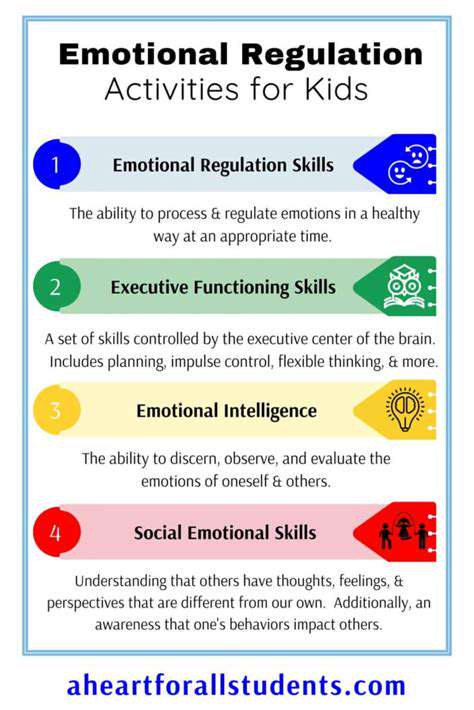
Understanding the Components of Emotional Regulation
Emotional regulation is a multifaceted process encompassing identifying, understanding, and managing one's emotions. It involves recognizing the physiological and behavioral responses associated with different emotional states, and developing strategies to effectively cope with challenging feelings. This process is crucial for navigating daily life and maintaining healthy relationships.
Developing emotional regulation skills is a journey, not a destination. It requires consistent effort and practice to master the various components and techniques involved.
Identifying and Labeling Emotions
A fundamental aspect of emotional regulation is the ability to accurately identify and label one's emotions. This involves recognizing the subtle nuances of feelings, from mild frustration to intense anger. Paying attention to both internal sensations (e.g., a tightening chest, a racing heart) and external cues (e.g., facial expressions, body language) can be a powerful tool in this process.
Precise labeling of emotions allows for more effective management strategies. Knowing you're feeling anxious, for example, is the first step in developing a plan to cope with that anxiety.
Managing Physiological Responses
Emotions are often accompanied by physiological responses, such as increased heart rate, sweating, or muscle tension. Recognizing these physical sensations as indicators of emotional arousal can help us to anticipate and manage our emotional reactions more effectively. Practicing relaxation techniques, such as deep breathing exercises or progressive muscle relaxation, can help regulate these responses.
Developing Coping Mechanisms
Effective coping mechanisms are essential tools for managing challenging emotions. These can range from simple strategies like taking a break, listening to calming music, or engaging in a hobby to more complex techniques like cognitive restructuring or mindfulness meditation. Identifying what works for you is a crucial part of this process.
Experimenting with different approaches to find what best suits your individual needs and preferences is key to developing a robust emotional regulation toolkit.
The Role of Self-Awareness
Self-awareness is a cornerstone of emotional regulation. It involves understanding your own emotional patterns, triggers, and responses. This includes recognizing your strengths and weaknesses in managing emotions. By understanding yourself, you gain the insights necessary to tailor strategies for effective emotion management.
Practicing Mindfulness and Self-Compassion
Mindfulness involves paying attention to the present moment without judgment. Practicing mindfulness can help you develop a greater awareness of your emotions without getting overwhelmed by them. Cultivating self-compassion is equally important. Being kind to yourself during challenging emotional experiences can foster resilience and encourage self-regulation.
Treating yourself with the same understanding and kindness you would offer a friend facing similar difficulties is a valuable tool in emotional regulation.
Seeking Support When Needed
Developing emotional regulation is a continuous process that may require support from others. Seeking guidance from a therapist, counselor, or support group can be invaluable. Remember, it's okay to ask for help. Building a network of supportive individuals can provide valuable perspectives and strategies for navigating emotional challenges.
Don't hesitate to reach out to trusted friends, family, or professionals when you're struggling to manage your emotions. Support systems are an important part of the journey towards emotional well-being.

Practical Application and Ongoing Support
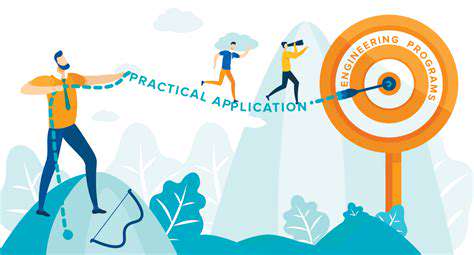
Practical Applications of Machine Learning in Healthcare
Machine learning algorithms are increasingly being integrated into healthcare systems to improve diagnosis, treatment, and patient outcomes. These applications range from early disease detection to personalized treatment plans, significantly impacting various aspects of healthcare delivery. For example, machine learning models can analyze medical images to identify potential abnormalities with high accuracy, assisting radiologists in faster and more reliable diagnoses. This accelerates the process of patient care and potentially saves lives.
Furthermore, machine learning can predict patient risk factors and proactively recommend preventive measures. This proactive approach to healthcare is crucial for reducing the burden of chronic diseases and improving overall public health. Early intervention based on predictive models can significantly enhance patient well-being.
Ongoing Research and Development in AI
The field of artificial intelligence is constantly evolving, with ongoing research and development pushing the boundaries of what's possible. New algorithms and techniques are emerging regularly, allowing for more sophisticated and accurate analyses of complex data sets. This constant innovation is vital for the continued advancement of healthcare applications.
Researchers are also focusing on addressing the ethical and societal implications of AI in healthcare. This includes ensuring data privacy, algorithmic fairness, and responsible use of AI-powered tools. This meticulous attention to ethical considerations is essential for building trust and ensuring the responsible integration of AI in healthcare.
Impact on Diagnostic Accuracy and Speed
Machine learning models have demonstrated significant potential in improving diagnostic accuracy and speed. By analyzing large datasets of medical images and patient records, these models can identify subtle patterns and anomalies that may be missed by human clinicians. This leads to earlier and more accurate diagnoses, enabling timely interventions and potentially improving patient outcomes. This increased speed and accuracy can have a massive impact on the efficiency of healthcare systems.
The ability to process vast amounts of data rapidly is crucial. This speed allows for quicker identification of potential issues, which can be crucial in emergency situations or conditions requiring immediate attention. This can save time and potentially save lives.
Personalized Treatment Strategies
Machine learning algorithms can analyze individual patient data, including medical history, genetic information, and lifestyle factors, to create personalized treatment strategies. These personalized approaches are tailored to the unique characteristics of each patient, leading to more effective and efficient treatment plans. Personalized approaches empower patients by providing tailored treatment plans that may be more effective than generic ones.
This can significantly improve patient outcomes by optimizing treatment efficacy and minimizing adverse effects. This personalized approach is critical for addressing individual needs within a patient population. It allows for a more targeted approach that often results in superior outcomes.
Challenges and Limitations of AI in Healthcare
While the potential of AI in healthcare is immense, there are also challenges and limitations to consider. Data quality and availability are critical factors influencing the accuracy and reliability of machine learning models. Ensuring the quality and quantity of data is a significant factor in the successful implementation of AI in medicine. Furthermore, the integration of AI systems into existing healthcare infrastructure requires careful planning and execution. This includes addressing compatibility issues between different systems and ensuring seamless data flow.
Future Directions and Potential Applications
The future of AI in healthcare promises exciting advancements in areas like drug discovery, robotic surgery, and remote patient monitoring. These advancements are poised to revolutionize healthcare delivery in the coming years, and the potential for progress is enormous. More research and development are needed to fully realize the potential of AI to transform how we approach patient care. Further research is needed to fully explore the potential of AI in this domain and to maximize its impact.
Moreover, the development of ethical guidelines and regulations for AI in healthcare is crucial to ensure responsible and equitable implementation. This is essential to cultivate public trust and ensure that AI-powered tools are used in the best interests of patients and society. Addressing these issues proactively will pave the way for a future where AI enhances rather than undermines healthcare systems.

